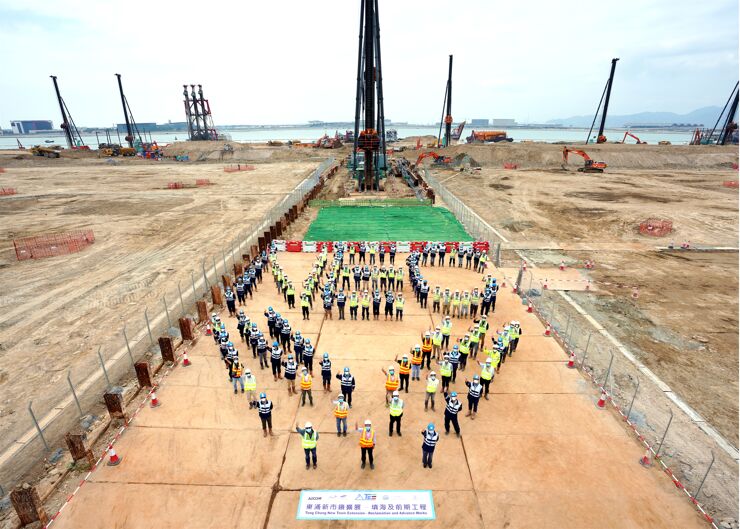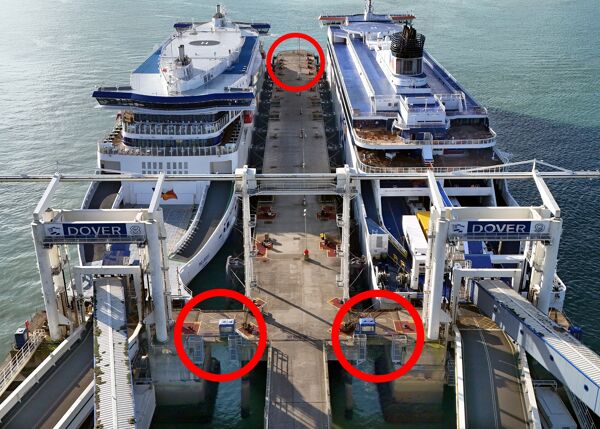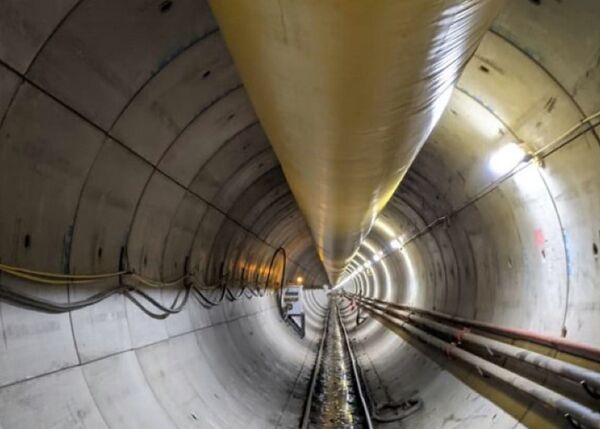
NEC has been used to reclaim 130 ha land at the eastern flank of Tung Chung New Town on Lantau Island in Hong Kong. Completed in January 2023, the HK$12 billion (£1.2 billion) NEC3 Engineering and Construction Contract (ECC) Option B (priced contract with bill of quantities) was one of the largest NEC contracts let in Hong Kong to date.
The Civil Engineering and Development Department (CEDD) of the Government of the Hong Kong Special Administrative Region awarded the reclamation work to Build King SCT Joint Venture in December 2017. AECOM Asia was appointed as project manager of the contract.
The work involved reclaiming land by non-dredged methods within a new 4.9 km long seawall. Known as Tung Chung East, the reclamation is providing space for 140,000 residents in 49,500 new homes. It will also provide a new commercial hub, with a total floor area of approximately 827 000 m2 for office and retail use.
Innovative construction methods included using construction and demolition materials as the reclamation filling material, forming a gravity wall by deep cement mixing, and creating 3.2 km of mangrove, rocky and vertical ‘eco-shorelines’ along the new seawall. The work also included construction of a four-cell-box drainage culvert, other advance works, and implementation of associated environmental mitigation measures.
The project won the 2020 NEC Innovation of the Year Award and was highly commended for the 2021 NEC Sustainability Award.
Managing programme risk
Yan Chun Ho, CEDD senior geotechnical engineer, says NEC3 ECC Option B was selected taking into consideration of the scale and complexity of the project and the need to achieve a tight construction programme with the risk of variation in works quantities. ‘We also introduced key dates for critical conditions to be met and secondary option X5 on sectional completion to clearly identify the contractor’s responsibilities at different stages of the contract.’
Yan says the project team adopted a core value of ‘one project – one team – one goal’ in line with the NEC requirement to act in a, ‘spirit of mutual trust and cooperation’. ‘The project team adopted a proactive approach to identify potential risks at the earliest opportunity through the NEC early warning process and arranged regular risk-reduction meetings to monitor and mitigate the associated risks.’
He says a ‘champion group’ formed by the project team’s top management met regularly to provide quick directives and decisions. ‘This strengthened the spirit of mutual trust and co-operation among project team members and boosted problem-solving efficiency, resulting in early completion of the land formation target.’
Innovative contract clauses
Chris Cheung, chief resident engineer of AECOM Asia, says the project team effectively used the NEC clauses in an innovative way to ensure successful delivery. ‘For example, an additional Z clause on the engagement of a dispute resolution advisor helped to promote effective communication, foster an open-minded culture and facilitate mutual understanding among project team members.’
He says the project team tactfully extended the role of dispute resolution advisor from one of resolution to avoidance, such that the advisor’s view was sought before a dispute arose. ‘An example of this related to the ambiguity of the requirements for the seawall. With the ambiguity resolved, the seawall was completed on schedule to enable early site handover, and all parties shared in the success.’
Keith Tse, site agent of Build King SCT Joint Venture, says another additional Z clause on ‘cost savings design’ helped to solve the shortage of sand for reclamation and seawall construction, which had threatened to put the programme at risk. ‘The project team worked together and shared innovative and practical ideas with an open mind, including substantial changes of design, construction method and sequence.’
He says the project team collaboratively identified and studied the feasibility of using construction and demolition materials to replace part of the reclamation fill. ‘We then exercised the cost savings design clause by proposing to adopt construction and demolition materials to replace part of the sand fill, and changed the sequence and design of the seawall to secure the reclamation filling programme.’
Tse says having ‘one project − one team − one goal’ in mind and being actively involved in devising the cost savings design, the employer and project manager were able to quickly accept the revised proposal. ‘As a result, not only were the project risks removed, but both the employer and contractor could share on the gain.’
Gravity wall by deep cement mixing
Yan says another example of NEC-inspired collaboration was when the contractor spotted the interface problem of carrying out a 6.5 m deep excavation for the four-cell-box drainage culvert. ‘This was in a narrow corridor between four recently reclaimed housing sites on which foundation works were already underway.’
He says after several workshops to brainstorm possible solutions, the contractor proposed using gravity walls formed by deep cement mixing as an alternative to a sheet-piled cofferdam with lateral steel support. ‘This significantly reduced the lifting operation for installing and dismantling the steel supports in the narrow working corridor and significantly improved work safety in close proximity to the housing sites.’
Yan adds that because the gravity walls by deep cement mixing also provided effective groundwater cut-off, no dewatering or grout curtain was required. ‘This innovative idea significantly reduced greenhouse gas emissions and enhanced the project’s sustainability and climate resilience.’
Overall, he concludes that NEC helped to attain project success through its strong focus on time, cost and quality. ‘This has directly led to timely completion of the project within budget, and the works are in full compliance with our requirements.’
Benefits of using NEC
- NEC requirement to act in a, ‘spirit of mutual trust and cooperation’ ensured collaborative working by the project team and led to ‘one project – one team – one goal’ approach.
- NEC3 ECC Option B was considered ideal for the huge scale and complexity of the project, the tight construction programme and the risk of variation in works quantities.
- NEC flexibility allowed additional clauses to be included, such as for a dispute resolution advisor to help avoid disputes, and for cost-saving design, which led to significant shared savings.
- NEC early warnings and regular risk reduction meetings helped to identify and resolve problems at the earliest opportunity, ensuring this massive project was completed on programme, within budget and to the required quality.



